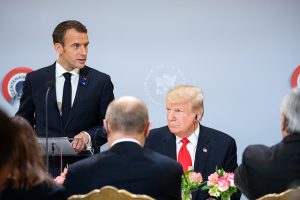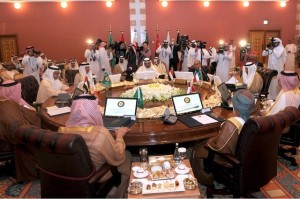by Alia Ahmed
In an about-turn of its two decades-old policy on Afghanistan, President Donald Trump tweeted in mid-December his decision to withdraw US troops from Afghanistan (and Syria). Until September last year, the United States had held firmly to a military solution to the Afghanistan imbroglio, reiterating that it would maintain military pressure on the Taliban irrespective of any timelines and until the Taliban capitulated and felt compelled to enter into direct negotiations with Kabul as their sole option going forward.
The volte face was delivered in typical Trumpian fashion—without any internal consultation, debate, or prior notice. The State Department, Pentagon, Congress, and the think tanks were all shocked and dismayed that a precipitous U.S. exit would spell the inevitable collapse of the Kabul regime, with ensuing instability and violence leading to Taliban dominance and a return to their dreaded rule. It seemed that the mission of the newly appointed peace envoy for Afghanistan, Zalmay Khalilzad, was dead in the water.
In my piece last September, I identified two ways of shaking the Afghanistan impasse out of its deep coma: Trump’s electoral talk of ending the war might trump the hawks. And the “way forward for a meaningful peace process and the stability and durability of a negotiated outcome lies in an elusive internal consensus in Afghanistan, and a multinational approach.” The first was relatively easy and opened a pathway. The second, involving the peace process and its end, is both more complicated and less determinate.
Where Matters Stand
One month after Trump’s tweet, intense diplomatic activity has taken place among almost all the regional players, yielding a new dynamic and debate on a post U.S.-controlled Afghanistan. The two principal antagonists, the United States and the Taliban, have agreed that: US troops will leave according to a yet-to-be-finalized timeline, and the Taliban will deny sanctuary to terrorists (euphemism for the Islamic State and al-Qaeda) on territory under its control. This agreement may address their immediate needs, but it does nothing for a stable transition to a peaceful Afghan future. Rather, it may open the way to endemic violence or, worse, a civil war. The Taliban later stated that they do not seek a “monopoly” of power and are amenable to an “inclusive Afghan world.” They have never before articulated their goals and intentions in such terms.
A credible ceasefire and initiation of an uninterrupted intra-Afghan dialogue are the sine qua non to a normalized Afghanistan.
For starters, the ground reality must be acknowledged and accepted, which will lead to various mental adjustments and compromises by the different parties. The Taliban must be brought in from the cold but disabused of their erstwhile drive for political domination and ideological oppression. And the Ashraf Ghani regime must cede political space as its erstwhile dominance is unsustainable and aberrational. The four elements in the potpourri—troop withdrawal, terrorist havens, ceasefire, intra-Afghan dialogue—should be interlinked in timelines as checks and balances and in order to ensure compliance. Ryan Crocker, twice U.S. ambassador to Afghanistan and presently diplomat-in-residence at Princeton, is more sanguine. The leaders “who are still in the Taliban after 18 years are now tough, committed, and I can’t imagine them signing on to any meaningful compromise. They’ll just talk compromise,” he told The New York Times. He makes an analogy with the Paris peace talks on Vietnam, observing, “By going to the table, we were, basically telling the North Vietnamese and Viet cong, ‘We surrender, we’re here just to work out the terms.’”
The Best-Case Scenario
Nothing is settled until everything is settled. The next U.S.-Taliban meeting is scheduled for February 25 in Doha. Now is the time for quiet backstage diplomacy, the quintessence of international relations, in preparation for the awaited denouement in Doha.
In this phase, the immediate neighbors of Afghanistan are the regional players with a critical role to influence intra-Afghan peacemaking. All of them realize that power-sharing is the only way to end the war and move toward peace. Therefore, it stands to reason that their influence must be to counsel restraint on the Afghan parties and steer them toward pragmatism and compromise. Pakistan, together with Saudi Arabia and the UAE, can prevail upon the Taliban and their various internal factions while Iran and Russia can put pressure on the Hazaras, Tajiks, and the north. China can play the traditional neutral with growing regional interest and ties with all sides. This has never been easy, as witnessed over and over again by Pakistan: mishandling the U.S. demand to surrender Osama, failing to prevent the destruction of the Bamiyan Buddhas, and so on.
Peacemaking may or may not entail peacekeeping. The international community and the regional players should be ready to discharge their responsibility as the situation requires.
The best-case scenario seems to be a phased U.S./NATO withdrawal over 18 months and a ceasefire that holds. An interim government in Kabul would form with Taliban participation. An intra-Afghan dialogue would take place on a new constitution and on all national issues. And international observers would monitor national elections, perhaps by October.
In essence, present-day Afghanistan would revert 40 years back to the old, traditional, recognized pre-Saur Revolution Afghanistan. It would again become a devolved, locally autonomous tribal confederacy. A respected elder (in the last instance King Zahir Shah) would hold together a weak center that would serve as a platform for the powerful Afghan oligarchs to meet and address their concerns and sustain national consensus. Nonetheless, Afghanistan does have a strong national identity. It has never been subjugated nor has it fallen apart. The Soviet-driven imposition of a socialist, centralized state has singularly failed, having unleashed a maelstrom of blood and tears. Afghanistan can begin only at the beginning.
Prediction is always dicey and often wrong. The Kabul government has so far been excluded from all discussion. It is miffed and sullen. Ipso facto, the peace process must be Afghan-led and the reconciliation Afghan-owned. Kabul has to be seated at the table. For now, its attitude is unknown and conjectural. On the other hand, expectations of a U.S.-Taliban deal have raised hopes more than at any time in the last 17 years.
So, once again, Afghanistan stands at the crossroads.






Superb analysis. The article makes a lot of sense and can serve as a blue print.
Great article. The author lays out the best case scenario, and the role that neighboring countries might play in the next 18 months.